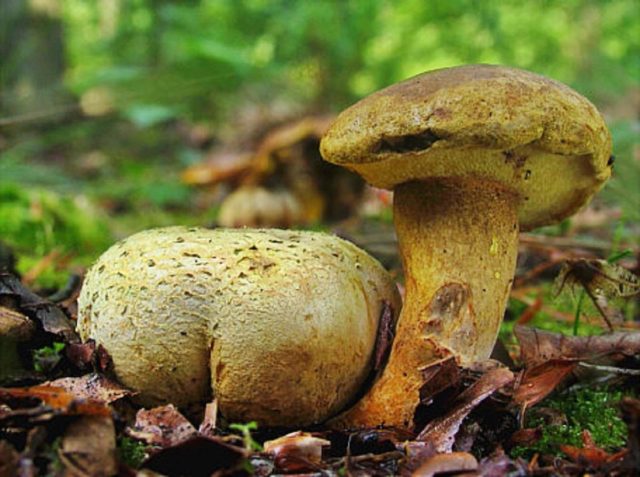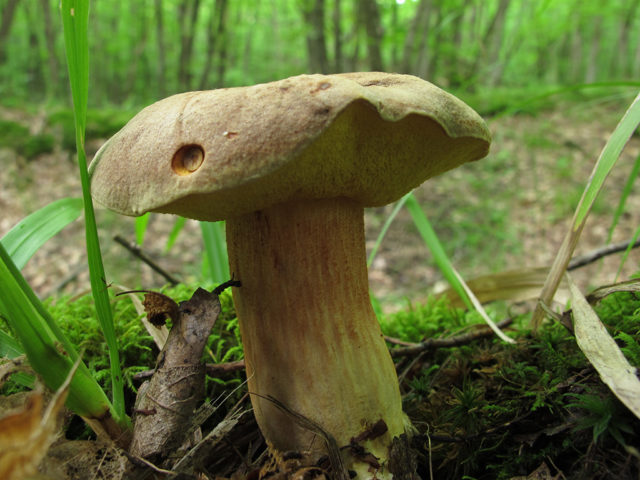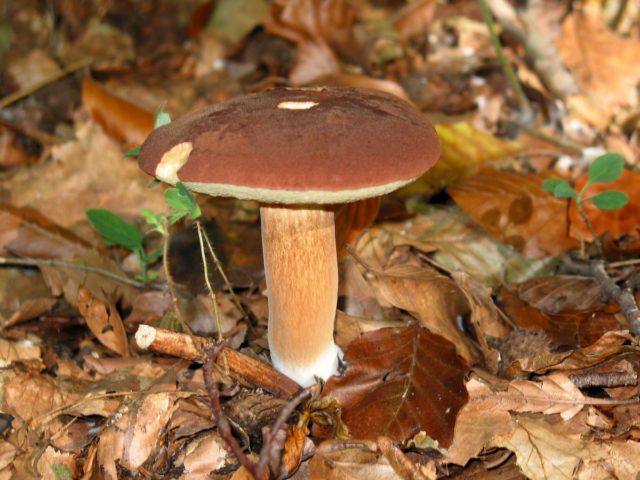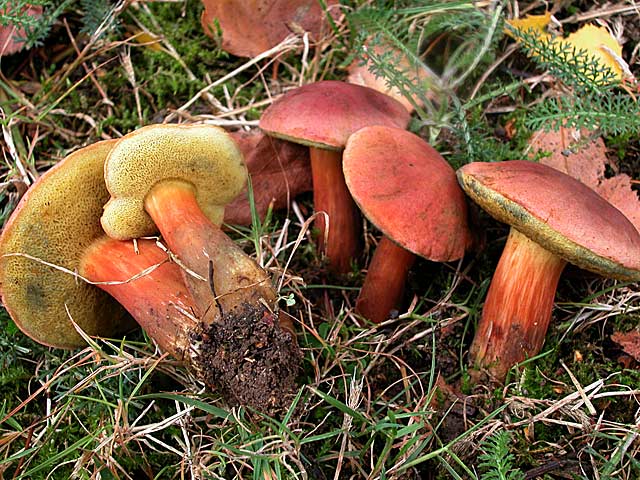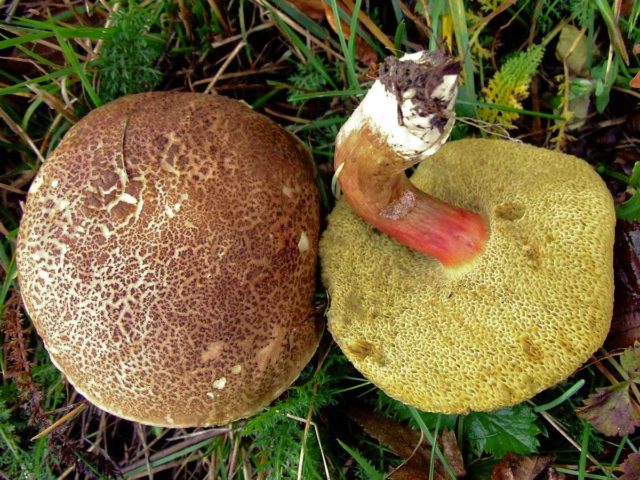Content
The parasitic flywheel is a rare mushroom. Belongs to the class Agaricomycetes, the Boletovye family, the Pseudoboleth genus. Another name is parasitic flywheel.
What parasitic flyworms look like
The parasitic flywheel is a small tubular mushroom of yellow or rusty brown color.
A young specimen has a hemispherical cap, a mature one is flat. Its surface is covered with a velvety delicate skin that can hardly be removed. Color - from lemon yellow to nutty. The diameter of the cap is from 2 to 5 cm. Its flesh is dense and thick.
The leg is yellow-olive, tapering towards the base. Its structure is fibrous, the pulp is yellow, dense, odorless, does not change color on the cut. The leg is curved, rather thin: barely 1 cm in diameter.
The parasitic flyworm has wide pores with ribbed edges. The layer of tubules in the young specimen is lemon-yellow, in the old one it is olive or rusty brown. The tubes themselves are short, descending. The spores are large, olive brown, fusiform.
The pulp is yellow or yellow-greenish, elastic, rather loose, odorless and tasteless.
Where parasitic flyworms grow
Representatives of the species are found in northern Africa, in Europe, in the east of North America. In Russia, they are extremely rare.
They grow on the bodies of false raincoats during the ripening period of the latter. They love sandstones and dry places. They grow in large colonies in deciduous and mixed forests.
Is it possible to eat parasitic flyworms
The parasitic flywheel is classified as an edible species, but is not eaten. The reason is low taste and nutritional value.
False doubles
The small fruiting body of the parasitic flyworm resembles the body of a young common green flyworm. Adult specimens of these species differ only in size.
Green moss is an edible tubular mushroom, the most common of the Moss family, found in all Russian regions. Possesses rather high taste - belongs to the second category. Both legs and hats are eaten. Most often they are salted and pickled.
The cap is olive-brown or gray, velvety, convex, its diameter is from 3 to 10 cm. The flesh is white, does not change color on the cut or is slightly blue. The stem is fibrous, smooth, with a brown mesh, cylindrical in shape, can taper towards the base. Its height is from 4 to 10 cm, thickness is from 1 to 2 cm. The layer of tubules is adherent, yellowish-olive or yellowish, turns a little blue when pressed.
The fruiting season is May-October. Found in deciduous and coniferous forests, love well-lit places. It grows along roadsides, in ditches, on forest edges. Likes to settle on rotten stumps, remnants of old wood, anthills. Often grows singly, rarely in groups.
There are several other moss mushrooms belonging to this genus:
- Chestnut (brown). An edible species that belongs to the third category in terms of taste.Fruiting time is June-October.
- Semi-gold... A very rare conditionally edible mushroom of gray-yellow color. Found in the Far East, Caucasus, Europe, North America.
- Blunt spore... Outwardly similar to other flywheels. Its main difference is the form of spores, which have a blunt cut end. Grows in North America, North Caucasus, Europe.
- Sprinkled (powdered, dusty). A rare edible mushroom with a delicious pulp. The fruiting season is August-September. It can be found in deciduous and mixed forests. Grows in small groups or singly in the Caucasus, Eastern Europe, the Far East.
- Red... An extremely rare edible species belonging to the fourth flavor category. They are eaten boiled, dried and pickled. It grows in ravines, on deserted roads, in deciduous forests, in thickets of grass. It is found in small colonies. Growth time is August-September.
- Woody... It is not found on the territory of Russia. Refers to inedible. It settles on tree trunks, stumps, sawdust. Grows in Europe and North America.
- Motley... A fairly common edible mushroom with low palatability. Young specimens are suitable for consumption. They can be dried, fried, pickled. It is found in deciduous forests, prefers to settle with linden trees.
Collection rules
The parasitic flywheel is not of interest and is not in demand among lovers of quiet hunting. You can collect them from mid-summer to mid-autumn. You only need to cut off the fruiting body.
Use
The parasitic flywheel is practically not eaten because of its unpleasant taste, although it can be eaten. It is not toxic, not dangerous, it will not bring any harm to health. Even prolonged heat treatment with the addition of flavoring seasonings is not able to improve its taste.
Conclusion
The parasitic flywheel does not look like any representative of its kind. It is impossible to confuse it with other mushrooms, since it is always attached to the fruiting body of another mushroom.
